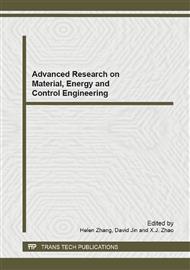p.334
p.344
p.348
p.353
p.357
p.361
p.365
p.373
p.376
The Fuzzy PI Control for the DSTATCOM Based on the Instantaneous Power Balance
Abstract:
Distribution Static Synchronous Compensator (DSTATCOM) to the public through the connection point into the reactive power can adjust the voltage of public access point, so as to meet the voltage quality. First of all papers DSTATCOM system in accordance with the instantaneous power balance theory derived DSTATCOM voltage used to control the direct voltage control strategy. In the control strategy without current detection circuit with traditional cascade control, compared with the control is simple, the advantages of fast response. And voltage control strategy for the direct control of the controller by the system parameters impact the performance of larger defects, a direct voltage DSTATCOM fuzzy PI control strategy, so that the instantaneous power balance in accordance with the direct voltage control has better control performance.
Info:
Periodical:
Pages:
357-360
Citation:
Online since:
January 2013
Authors:
Keywords:
Price:
Сopyright:
© 2013 Trans Tech Publications Ltd. All Rights Reserved
Share:
Citation:


